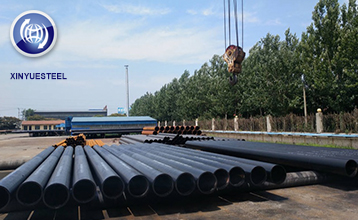Policy control measures are introduced, the contradiction between coal supply and demand is temporarily difficult to resolve
Dec. 16, 2020
Coal mines in the main producing areas have frequent environmental protection and security inspections. Some coal mines have completed their annual production tasks. The production enthusiasm has declined, and the overall supply has shrunk; the pit market is active, coal carts are commonly queued, showing a situation of short supply, coal mine inventories are generally low, and prices continue rise. Some coal mines in Ordos, Inner Mongolia, raised their prices twice a day, and the platform and chemical purchases were active. The major coal mines have maintained their supply. After the price increase, the purchases of small and medium mines have not decreased, and the sales volume has remained high. Due to the shortage of goods in the port direction, Qinhuangdao, SDIC Jingtang, Caofeidian Huadian and other ports have low inventory. Some coal mines have reduced land sales and prioritized the guarantee of water coal.
In downstream consumption areas, in addition to the slight increase in inventory at South China ports, inventory at Jiangnei and East China ports further decreased, and the total inventory at southeast coastal and riverside ports fell by 32% year-on-year. At the same time, the number of transfers from coal ports continued to decline, and throughput remained high, prompting its inventory to continue to decline. Up to now, the ten largest coal transportation ports in the Bohai Sea have a total of 18.01 million tons of coal, a decrease of 950,000 tons from a week ago, and a sharp drop of 1.77 million tons from the beginning of the month. Among them, the coal storage in Qingang dropped to 4.77 million tons. Affected by the shortage of low-sulfur high-quality coal, the phenomenon of ships waiting for cargo and berthing has increased. The number of anchored ships at Bohai Rim ports continues to increase, and the enthusiasm for queuing for coal continues to increase. The number of anchored ships in Bohai Rim ports increased to 204, an increase of 24 from a week ago and an increase of 27 from the beginning of the month.

In order to ensure power supply, some small households are pulling and purchasing coal from the market. However, various types of low-sulfur coal at the port are severely out of stock. The market quotation is rather chaotic. Some websites are still publishing indexes, but they deviate greatly from actual prices. Some coal types It is even 100 yuan/ton lower than the quotes of some traders. The shortcomings that have emerged after the import restrictions on coal cannot be made up for the time being, and the supply and demand pattern of the domestic coal market cannot be improved in the short term. Due to the limited supply of goods and the active purchase of some users, high-quality coal in the market can be found, and individual traders are still hoarding coal. The demand for shipping in the shipping market continues to be strong, and the ocean freight has reached a new high in the past three years; Qinhuangdao-Guangzhou 50,000-60,000-ton ships 62.4 yuan/ton, an increase of 9 yuan/ton from a week ago and an increase of 13.6 yuan/ton from the beginning of the month .
The pace of economic recovery is accelerating, the demand for non-electric terminals such as cement and chemicals is stable, and electricity consumption is steadily increasing. In the winter, the country’s temperature dropped significantly, which led to an increase in the demand for thermal coal. The daily consumption of power plants showed a seasonal rebound. The inventory of key power plants, integrated power plants, and direct power plants all fell from high levels, and the market replenishment rhythm was orderly. The coal consumption demand of coastal power plants has entered the peak season, and the power plant units are operating at full load, and the phenomenon of high daily consumption and low inventory is more obvious. On December 10, the daily consumption of the eight coastal provinces increased by 5.7% year-on-year, and inventory fell by 15% year-on-year. The number of days available for individual power plants’ inventory has fallen to single digits.



